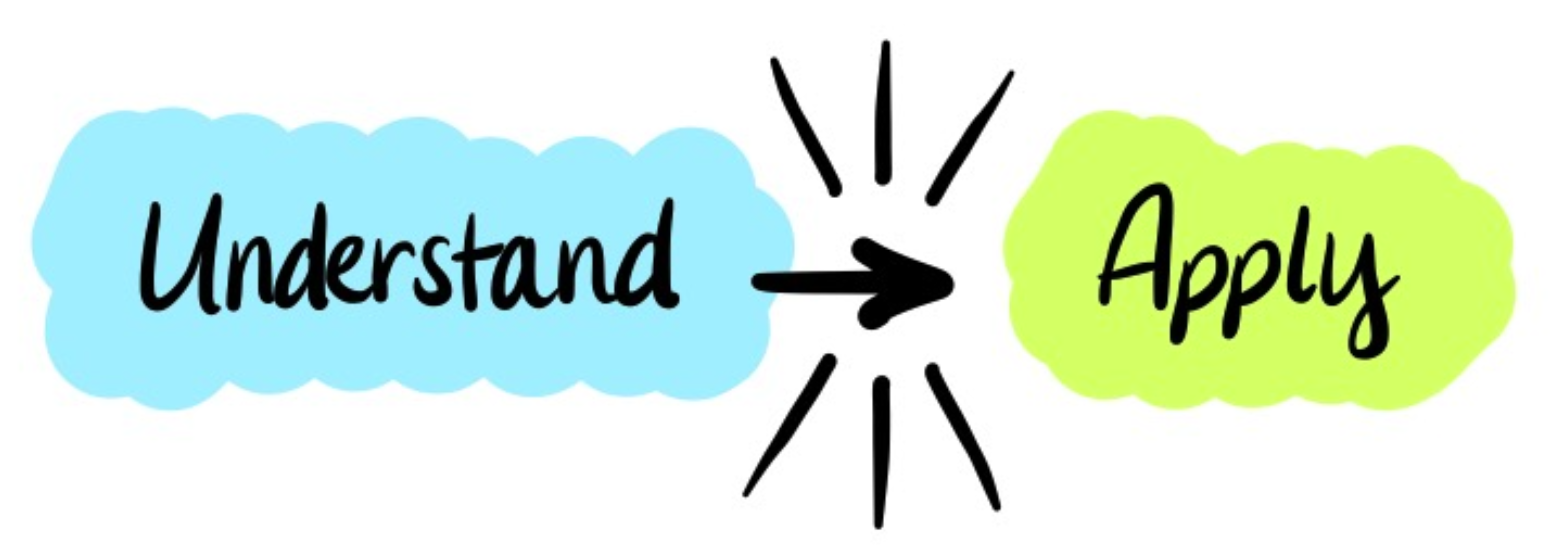
Alexandros Giannakakis - Unsplash
When it comes to education and training, the conventional approach often centers on theoretical knowledge and understanding. This approach, rooted in Bloom's taxonomy, defines various levels of proficiency but tends to primarily focus on comprehension within the confines of a classroom setting (virtually or in-person). This controlled environment provides a foundation for understanding, but the true test of knowledge occurs when learners take their insights into their jobs. This transition from understanding to application is a crucial step, one that can be transformative for both learners and the environments they engage with.
This transition isn't always easy, though. The journey from classroom knowledge to real-world impact is often accompanied by uncertainty, as learners grapple with turning their ideas into actionable outcomes. I have a personal experience with this myself, that I share below.
Students may find themselves in a state of potential, filled with aspirations, hope, and concepts, yet they may lack the confidence or guidance to translate these notions into tangible results. This chasm between theoretical understanding and practical application has become a common obstacle in modern training landscapes.

Immersion Training is designed to help students bridge the gap between theoretical understanding and practical application. These learning experiences challenge the traditional norms by integrating focus, outcomes over outputs, iterative and incremental, and empiricism - Agile concepts that are already familiar to us as part of having an Agile mindset - and topics of learning within Scrum.org courses. By doing so, Immersion Training classes enable students to apply their learning immediately and in meaningful ways.
I do want to be clear that traditional classes hold immense value. They excel at introducing new knowledge and concepts efficiently, allowing students to hone their understanding through exercises and develop skills within a safe and structured environment. This initial phase of learning is essential, and Scrum.org recognizes its importance.
Immersion Training includes the first phase of classroom learning, however, the classroom experience is delivered in smaller sessions over several weeks compared to a traditional class which is typically delivered over consecutive days. Additionally, Immersion Training extends the overall learning experience to include application and reflection elements, illustrated below.

Whether you are interested in participating in a traditional class or an Immersion Training class comes down to your personal preferences and learning goals. Some students thrive in the world of hands-on learning and would benefit from the guidance Immersion Training classes offer to help them apply what they've learned in practical situations. Others enjoy the deep-dive discussions and immediate knowledge infusion of a traditional class that establishes a solid foundational understanding for future self-directed application.
Both approaches have their unique strengths and are appropriate for different types of learners.
Personally, I am the type of learner who needs examples and guidance when trying something new, especially when there are, or I perceive that there are, significant consequences or impacts associated with that new thing.
On my very first day as a Product Owner, I was of course excited, but also incredibly nervous. I had inherited not just one product, but the entire portfolio of Scrum.org courses. Without deep-diving into my entire professional growth journey while at Scrum.org, I have been fortunate enough to attend or observe nearly all of the courses in our portfolio more than once, and am surrounded by wonderful, knowledgeable, and supportive people.
By all accounts, I should have been in an exceedingly advantageous position to start my new role.
 But that's not how some people learn and grow, or rather, convert theory to practice. There was immense value in attending the classes I did; I believe they set me up with a strong foundation to build on. I personally needed more guidance. True growth for me happened gradually with the help of a mentor and Scrum Master: with one-on-one guidance, and taking small, real-life, baby steps. We met once a week, and coupled with many stories of past experiences and advice, we reflected on how the previous week went, what was urgent or top of mind at that moment, and then came up with one small outcome that I agreed to make an effort towards over the upcoming week.
But that's not how some people learn and grow, or rather, convert theory to practice. There was immense value in attending the classes I did; I believe they set me up with a strong foundation to build on. I personally needed more guidance. True growth for me happened gradually with the help of a mentor and Scrum Master: with one-on-one guidance, and taking small, real-life, baby steps. We met once a week, and coupled with many stories of past experiences and advice, we reflected on how the previous week went, what was urgent or top of mind at that moment, and then came up with one small outcome that I agreed to make an effort towards over the upcoming week.
While my story is about an individual experience as opposed to a classroom experience, the elements that catalyzed my growth and confidence as a Product Owner are strikingly similar to the elements of an Immersion Training class. In both cases, there are elements of incremental learning with examples, outcome-based assignments, and dedicated reflection.
At a more holistic level, I believe this pattern of learning, trying with an example, applying in real life, and reflection is broadly inherent to true skills growth in any circumstance.

Coupled with this personal experience, at the time, we were also beginning to investigate what new training formats would mean for Scrum.org learners. The question had become, how can we approach our mission of helping people and teams solve complex problems in a different way by focusing on how people learn?
We began to hear a trend throughout the Professional Scrum Trainer (PST) community that centered around making learning more actionable, and therefore more practical. The development of Immersion Training is perhaps best saved for another blog, however, we are excited to share this new training format with our learners today.
I believe that Immersion Training is the bridge that connects theory and action, and transforms learners into confident practitioners.

By embracing experiential learning, quick application, and iterative growth, learners will gain the practical skills they need to affect positive change in their environments immediately.
Whether you thrive in immersive hands-on experiences or value a solid foundation for self-guided application, Scrum.org offers Immersion Training classes and traditional classes tailored to your learning preferences.

Visit the Training Schedule to find an Immersion Training class near you
Visit the Immersion Training Overview to learn more
